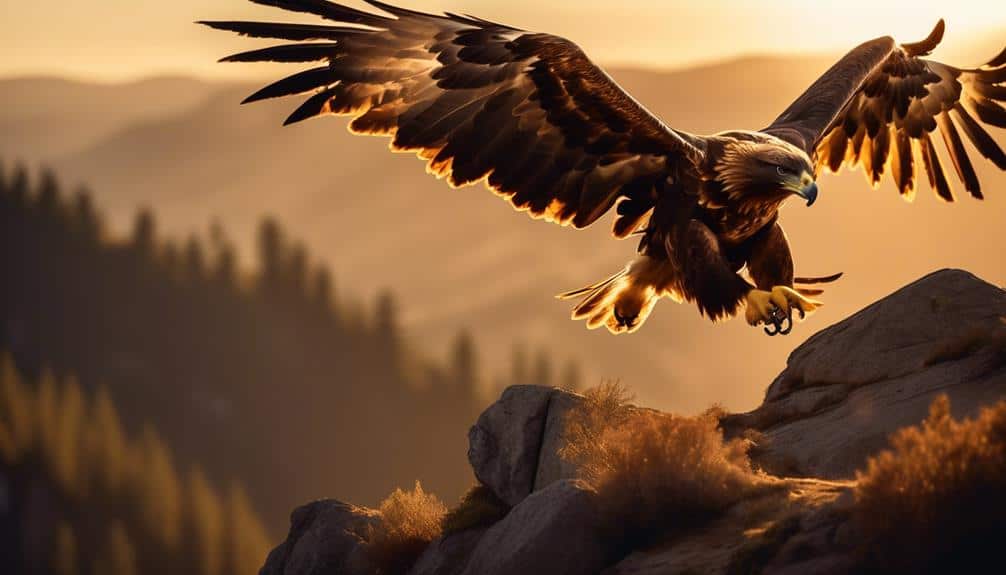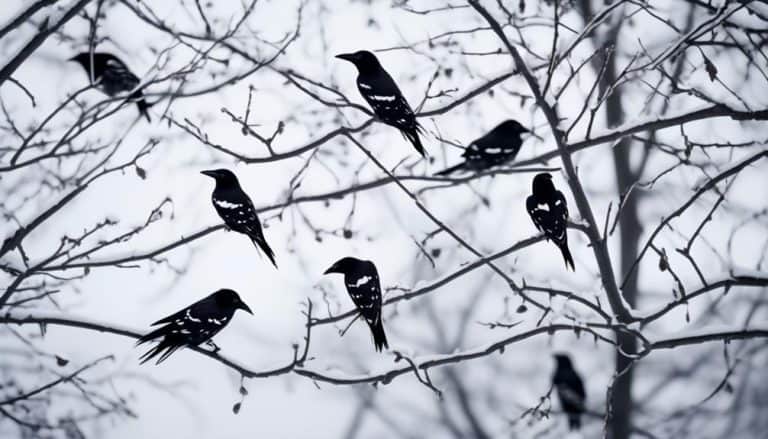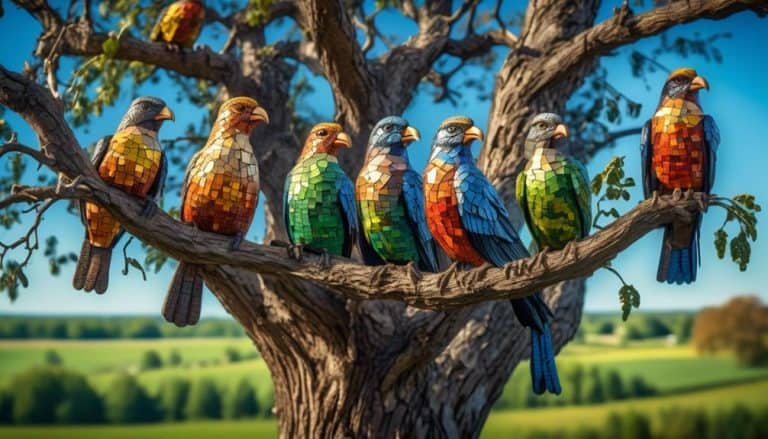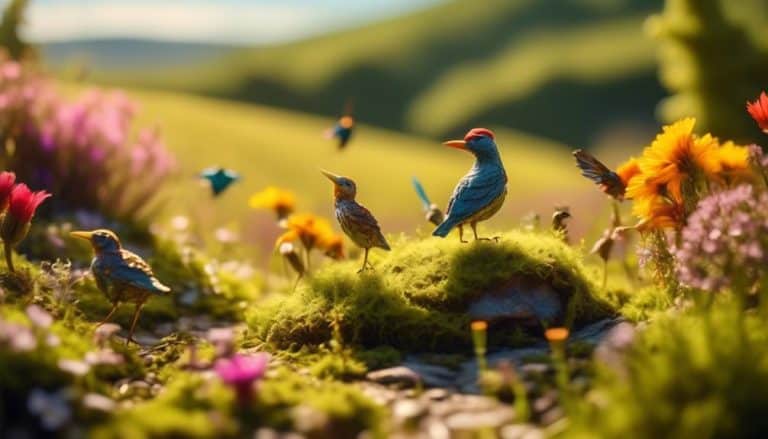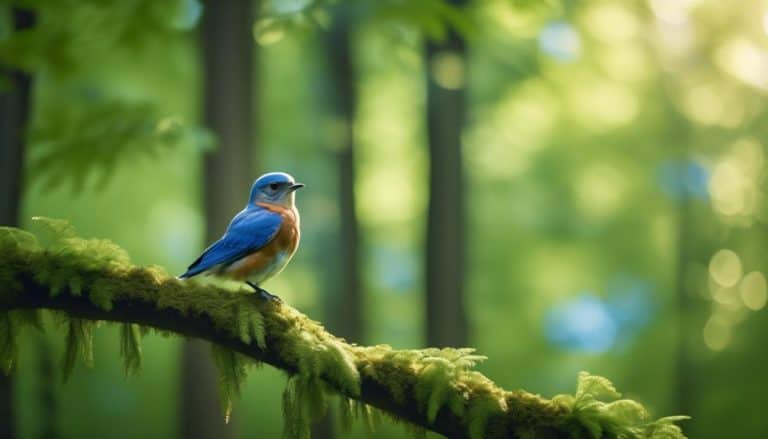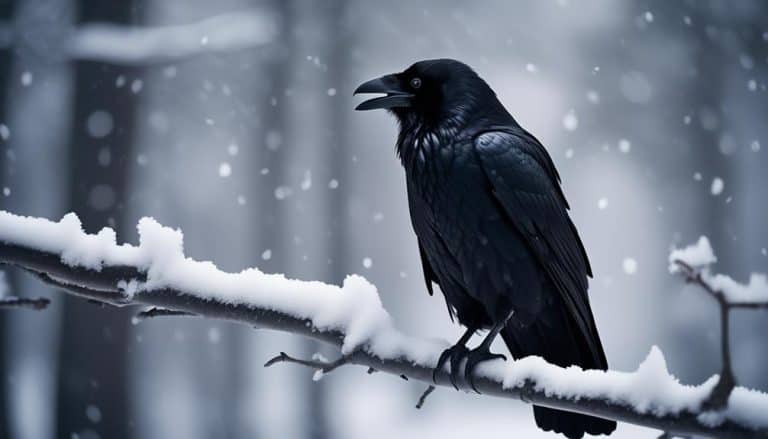As I stand amidst the towering trees of Oregon, I am reminded of the grace and power that birds of prey possess. These majestic creatures, with their sharp talons and keen eyesight, command our attention and ignite our curiosity.
From the elusive Great Horned Owls that rule the night to the lightning-fast Peregrine Falcons that soar through the skies, Oregon is home to a diverse array of raptors.
In this discussion, we will explore the fascinating world of Birds of Prey in Oregon, uncovering their unique characteristics, hunting techniques, and the vital role they play in maintaining the delicate balance of our ecosystem.
So, let's embark on a journey through the captivating realm of these magnificent creatures, and discover the untold secrets that lie within.
Bald Eagles: Oregon's Majestic Raptors
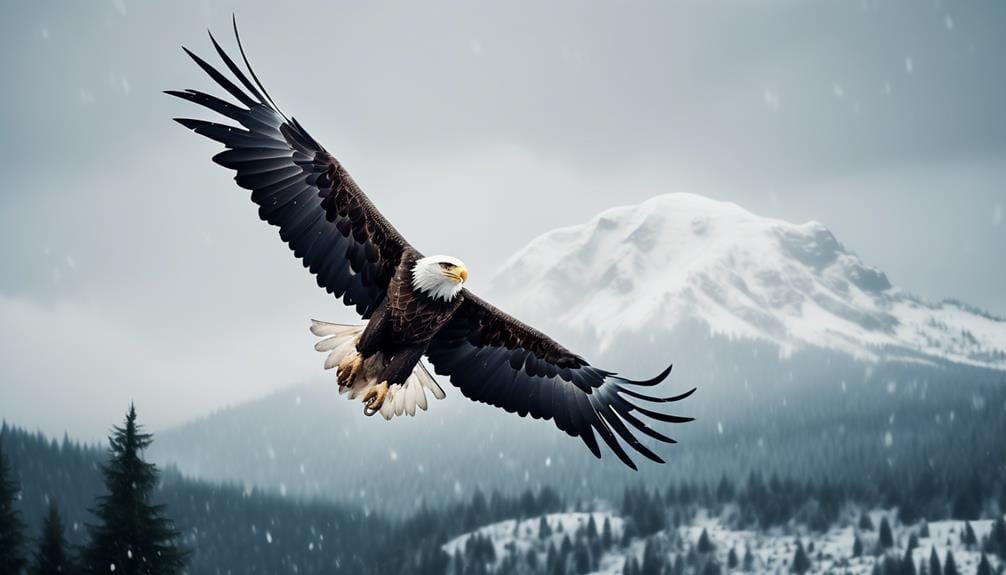
Bald Eagles, the majestic raptors of Oregon, command awe and admiration with their powerful presence and striking plumage. These iconic birds are a symbol of strength and resilience, and their conservation is of utmost importance. One of the key aspects of preserving bald eagle populations is protecting their nesting sites.
Bald eagle nesting sites, also known as eyries, are crucial for the survival and successful reproduction of these magnificent birds. These sites are typically located in tall trees near bodies of water, providing the eagles with a vantage point to spot prey and a safe haven to raise their young. Preserving these nesting sites is essential for the long-term survival of the species.
Bald eagle conservation efforts focus on identifying and protecting these nesting sites, ensuring that they remain undisturbed and safe from human interference. Conservation organizations work closely with landowners and government agencies to designate protected areas and implement measures to safeguard these crucial habitats.
Great Horned Owls: Silent Hunters of the Night
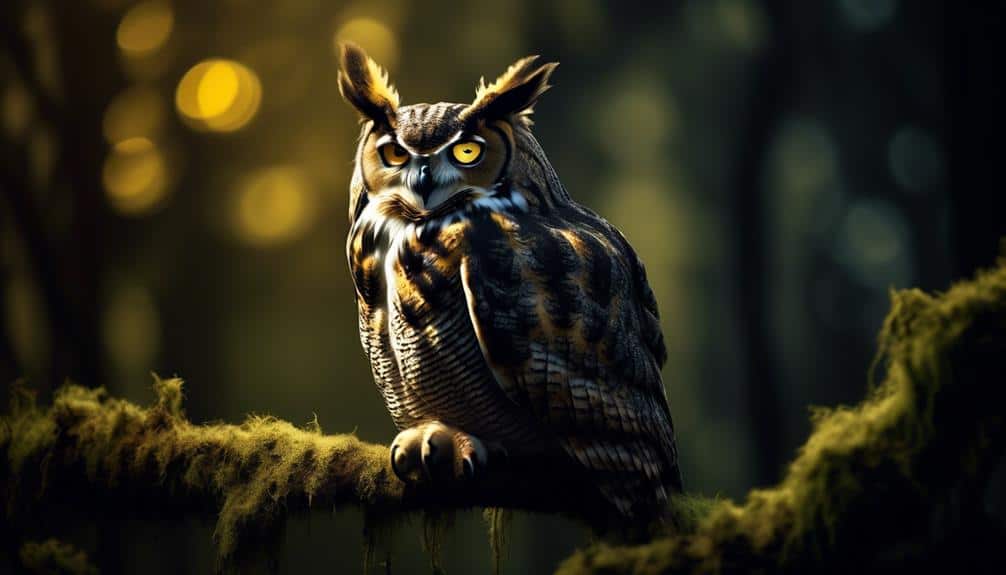
Great Horned Owls, known for their silent flight and exceptional hunting abilities, are the formidable nocturnal predators of Oregon's forests. These majestic creatures possess unique adaptations that make them highly efficient hunters. Here are five characteristics that paint a vivid picture of the Great Horned Owls' prowess:
- Enormous Yellow Eyes: Their large, piercing yellow eyes allow them to see in near darkness, giving them a distinct advantage over their prey.
- Asymmetrical Ears: One ear sits higher than the other on their head, enabling them to pinpoint the exact location of even the faintest sounds, like a mouse rustling in the undergrowth.
- Feathery Facial Disc: This specialized facial structure acts like a satellite dish, directing sound waves towards their ears, further enhancing their acute hearing.
- Silent Flight: Their wings are lined with specialized feathers that reduce turbulence and muffle the sound of their flight, allowing them to approach their unsuspecting prey undetected.
- Powerful Talons: Equipped with sharp, curved talons, Great Horned Owls can swiftly snatch and secure their prey, ensuring a successful hunt.
In addition to their remarkable adaptations, Great Horned Owls play a crucial role in controlling rodent populations. With their exceptional hunting skills, they keep the rodent numbers in check, preventing overpopulation and the subsequent damage to crops and ecosystems.
Great Horned Owls are truly remarkable creatures, perfectly adapted for their nocturnal hunting lifestyle. Their silent flight and exceptional abilities make them top predators in Oregon's forests, making them an integral part of the delicate balance of nature.
Red-tailed Hawks: Masters of Soaring and Scouting
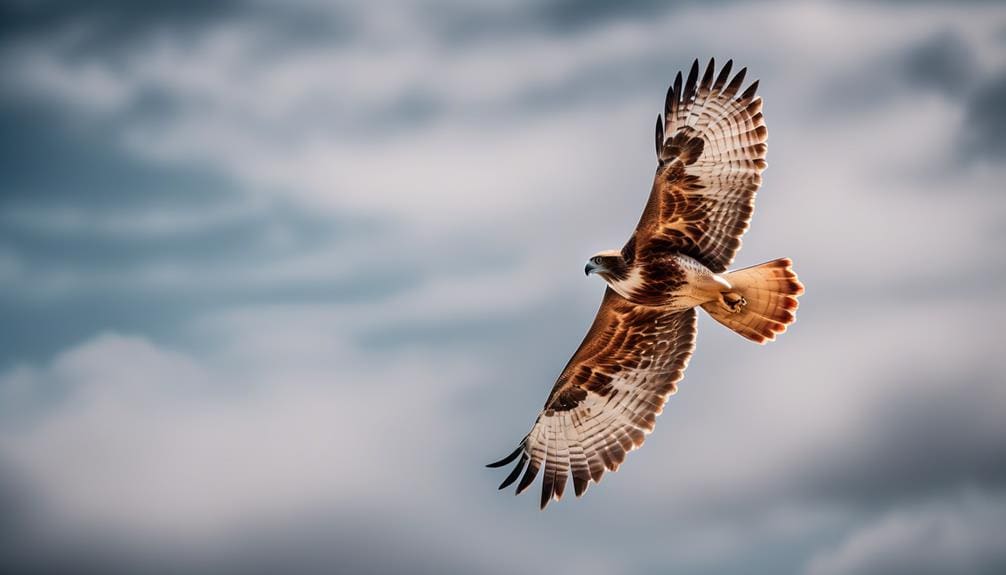
Red-tailed Hawks gracefully dominate the skies of Oregon with their mastery of soaring and keen scouting abilities. These majestic birds are known for their distinctive red tails, which are often visible as they glide through the air.
Red-tailed Hawks have fascinating nesting behavior, building large nests high up in trees. These nests, known as aeries, are constructed with sticks and lined with softer materials such as moss and leaves. The female hawk lays two to three eggs, and both parents take turns incubating them for about a month. Once the chicks hatch, they stay in the nest for several weeks and are cared for by their parents.
When it comes to hunting, Red-tailed Hawks are highly skilled and adaptable. They primarily prey on small mammals such as mice, voles, and rabbits, but they're also known to eat birds, reptiles, and even insects. These hawks employ various hunting techniques, including soaring and scanning the ground below for movement. Once they spot their prey, they dive down with incredible speed and accuracy, using their sharp talons to grasp and kill their target.
Red-tailed Hawks are truly masters of the skies, using their exceptional vision and agility to succeed in their hunting endeavors.
Peregrine Falcons: The Fastest Birds in Oregon

Peregrine Falcons, renowned for their incredible speed and agility, dominate the skies of Oregon as the fastest birds in the region. These magnificent creatures have evolved remarkable flight adaptations that enable them to achieve incredible speeds in their pursuit of prey.
Here are five key features that contribute to their unparalleled speed:
- Streamlined body: Peregrine Falcons possess a sleek and aerodynamic body shape, minimizing air resistance and allowing them to cut through the air effortlessly.
- Powerful wings: With a wingspan of up to 3.4 feet, their wings are long and pointed, providing maximum lift and maneuverability during high-speed chases.
- Adapted respiratory system: Peregrine Falcons have highly efficient lungs that extract oxygen from the air rapidly, allowing them to sustain their breathtaking speeds.
- Sharp visual acuity: Their keen eyesight enables them to spot prey from great distances, giving them a strategic advantage in their hunting endeavors.
- Agile hunting techniques: Peregrine Falcons employ a combination of high-speed stoops and aerial acrobatics, diving steeply from great heights and executing precise mid-air maneuvers to capture their prey.
Conservation efforts play a crucial role in protecting the habitat of Peregrine Falcons in Oregon. Conservationists work tirelessly to preserve their nesting sites and ensure the availability of ample prey. Through habitat restoration, public education, and monitoring programs, we can contribute to the conservation of these magnificent birds and ensure their continued presence in the Oregon skies.
Ospreys: Fish-Eating Raptors of the Pacific Northwest
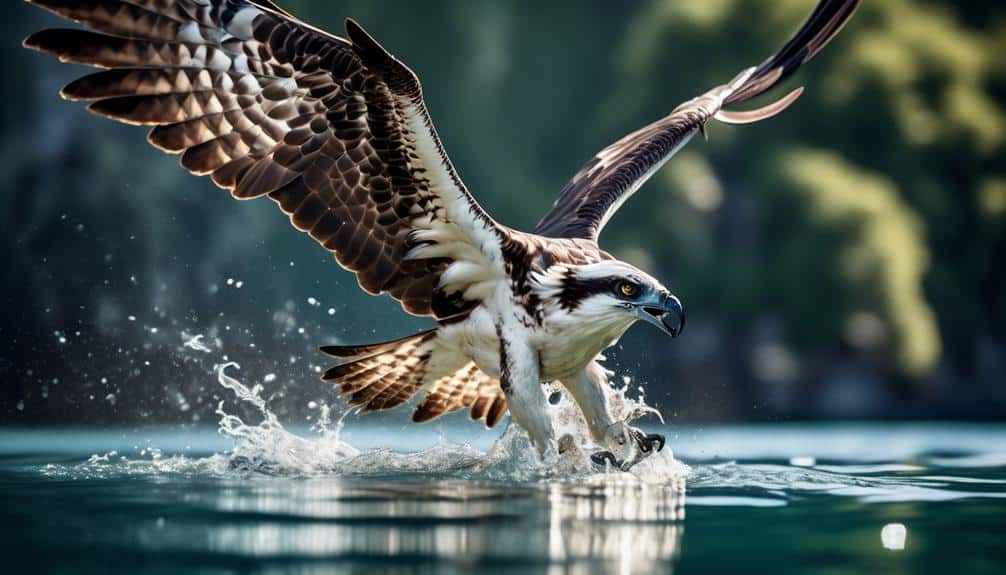
Ospreys, renowned for their exceptional fishing abilities, are formidable raptors that dominate the skies of the Pacific Northwest. These magnificent birds, also known as fish hawks or sea eagles, have adapted perfectly to their fish-eating lifestyle. Ospreys have a unique set of physical attributes that enable them to thrive in this environment. With their sharp talons and curved, powerful beaks, they're well-equipped to catch and consume fish.
When it comes to nesting habits, ospreys exhibit a strong fidelity to their breeding sites. They typically build their nests on elevated locations such as treetops, cliffs, or man-made structures like telephone poles or nesting platforms. These nests, known as eyries, are made from sticks and lined with softer materials like moss, grass, or seaweed. Ospreys tend to return to the same nesting site year after year, adding to their nests each season.
Unfortunately, the osprey population in the Pacific Northwest has seen a decline in recent years. Habitat loss, pollution, and disturbance of nesting sites have all contributed to this decline. Conservation efforts are underway to protect and restore their habitats, as well as provide safe nesting platforms for these magnificent birds. By understanding their nesting habits and addressing the factors impacting their population, we can work towards ensuring the survival and thriving of the osprey population in the Pacific Northwest.
Frequently Asked Questions
What Is the Average Lifespan of a Bald Eagle?
The average lifespan of a bald eagle is around 20 years. It's fascinating to learn about their nesting habits and the conservation efforts in place to protect these majestic birds.
How Far Can a Great Horned Owl's Hoot Be Heard?
A great horned owl's hoot can be heard from up to five miles away. This is an important form of communication for owls, allowing them to establish territory and attract mates. Bird behavior and owl communication are fascinating aspects of the natural world.
What Is the Wingspan of a Red-Tailed Hawk?
The wingspan of a red-tailed hawk is impressive, stretching up to 4 feet. These majestic birds are known for their remarkable hunting techniques and their migration patterns, making them a fascinating species to study.
How Fast Can a Peregrine Falcon Fly?
The peregrine falcon is known for its incredible speed in flight. It can reach speeds of up to 240 miles per hour when diving to catch its prey. This hunting technique is essential for their survival. Additionally, peregrine falcons are known for their impressive migration patterns, traveling long distances during seasonal changes.
Do Ospreys Only Eat Fish or Do They Also Consume Other Prey?
Ospreys, also known as fish hawks, primarily feed on fish but they can also consume other prey. They are solitary hunters, adept at diving deep into the water to catch their meals.
Conclusion
In conclusion, Oregon is home to a diverse and awe-inspiring array of birds of prey. From the majestic Bald Eagles soaring through the skies to the silent hunters of the night, the Great Horned Owls, these raptors dominate the ecosystem with their superior hunting skills.
With their mastery of soaring and scouting, the Red-tailed Hawks and the lightning-fast Peregrine Falcons add a touch of elegance to the Oregonian skies.
And let's not forget the Ospreys, the fish-eating champions of the Pacific Northwest. Witnessing these magnificent creatures in action is like watching a breathtaking ballet in the sky.

